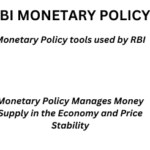Forest Cover Lost, India Falls 11% Behind 33 % Target

India’s total forest, 22% of India’s total geographical area, cover currently is 713,789 sq km which currently is behind over 11% to India’s target to 33% by this year. This data has been released in India’s State of Forest Report (ISFR) 2021. The increase in the forest cover has been observed as 1,540 sq km and that in tree cover is 721 sq km.
The total forest cover, however, has increased by a mere 1,540 Sq Km. India’s total forest cover increased by 1.5% compared from 2015 to 2017, by 0.5% from 2017 to 2019 and by 0.2% in the next two years from 2019 to 2021.
There is an increase of 2,261 sq km in the total forest and tree cover of the country, as compared to 2019. The total forest and tree cover of the country is 80.9 million hectares which is 24.62 per cent of the geographical area of the country.
- The top three states showing an increase in forest cover are Andhra Pradesh (647 sq km) followed by Telangana (632 sq km) and Odisha (537 sq km).
- Area-wise Madhya Pradesh has the largest forest cover in the country followed by Arunachal Pradesh, Chhattisgarh, Odisha and Maharashtra.
- In terms of forest cover as a percentage of total geographical area, the top five states are Mizoram (84.53 per cent), Arunachal Pradesh (79.33 per cent), Meghalaya (76.00 per cent), Manipur (74.34 per cent) and Nagaland (73.90 per cent).
- A total of 17 states/union territories’ have above 33 percent of the geographical area under forest cover. Out of these states and union territories, five namely Lakshadweep, Mizoram, Andaman & Nicobar Islands, Arunachal Pradesh and Meghalaya have more than 75 per cent forest cover.
- Twelve states and union territories namely Manipur, Nagaland, Tripura, Goa, Kerala, Sikkim, Uttarakhand, Chhattisgarh, Dadra & Nagar Haveli and Daman & Diu, Assam, Odisha, have forest cover between 33 per cent to 75 per cent.
- Total mangrove cover in the country is 4,992 sq km. An increase of 17 sq km in mangrove cover has been observed as compared to the previous assessment of 2019.
- The top three states showing mangrove cover increase are Odisha (8 sq km) followed by Maharashtra (4 sq km) and Karnataka (3 sq km).
- Bamboo forests have grown from 13,882 million culms (stems) in 2019 to 53,336 million culms in 2021.
- Total carbon stock in the country’s forest is estimated to be 7,204 million tonnes and there is an increase of 79.4 million tonnes in the carbon stock of the country as compared to the last assessment of 2019. The annual increase in the carbon stock is 39.7 million tonnes.
CONCERNS AND CHALLENGES
The ISFR 2021 estimates that by 2030, 45-64 per cent of Indian forests will be affected by climate change and rising temperatures, and forests in all states (except Assam, Meghalaya, Tripura and Nagaland) will be highly vulnerable climate hot spots.
The report suggests that Ladakh (forest cover 0.1-0.2 per cent) is likely to be the most affected by climate change.
Forest fires:
According to the long-term trend analysis performed by the FSI, nearly 10.66 per cent area of forest cover in India is under extremely to very highly fire-prone zones.
Over 3.98 lakh forest fires were reported in India in the fire season from 2020-2021, more than double the number of blazes compared to the previous year. Among states, the maximum number of fires were observed in Odisha at 51,968, followed by Madhya Pradesh at 47,795 and Chhattisgarh at 38,106.
Among districts, the maximum number of such incidents were observed in Gadchiroli in Maharashtra at 10,577, followed by Kandhamal in Odisha at 6,156 and Bijapur in Chhattisgarh at 5,499 incidents.
Decline in natural forests: Even though ‘very dense forests’ (with canopy density over 70 per cent) have increased by 501 sq km, ‘moderately dense forests’ or ‘natural forests’ (with 40-70 per cent canopy density) have declined by 1,582 sq km.
When compared with an increase of 2,621 sq km in open forest areas (10-40 per cent density), the decline of moderately dense forests suggests a degradation of forests in the country as natural forests are degrading to less dense open forest areas.
Decline in Northeastern forest cover: Even though Mizoram, Arunachal Pradesh, Meghalaya, Manipur and Nagaland top the charts in terms of forest cover as percentage of total geographical area, the five northeastern states have all shown a loss in forest cover.The forest cover in the region has shown an overall decline of 1,020 sq km in forest cover.
Open forests form the largest section of India’s total forest cover, while very dense forests are merely 3.04%. Open forests have increased by 2,612 sq km in the last two years. Very dense forests have increased by just 501 sq km, while 1,582 sq km of moderately dense forests have been lost.
The net increase in the total forest land has mostly been an outcome of agro-forestry and plantations.
The forest cover that has been lost, a major part of it is from the country’s dense forest areas. Whereas, the increase that we claim in our forest cover is mostly under ‘open forest’. Open forest is a category of forest cover where the tree canopy density is 10-40%.
All forest cover has been divided into four categories according to their tree canopy density (TCD) :
Very Dense Forest (TCD: 70% or more)
Moderately Dense Forest (TCD: 40% to70 %)
Open Forest (TCD: 10% to 40%)
Scrub (TCD: less than 10%)



0 Comments